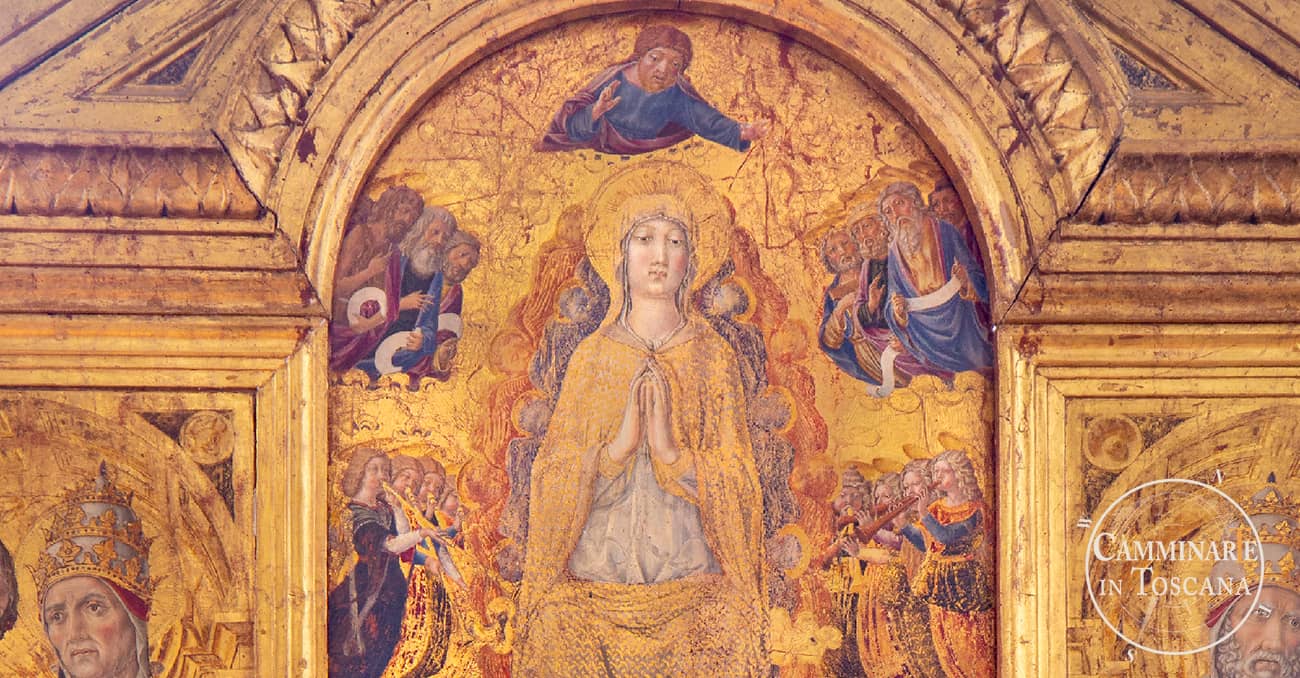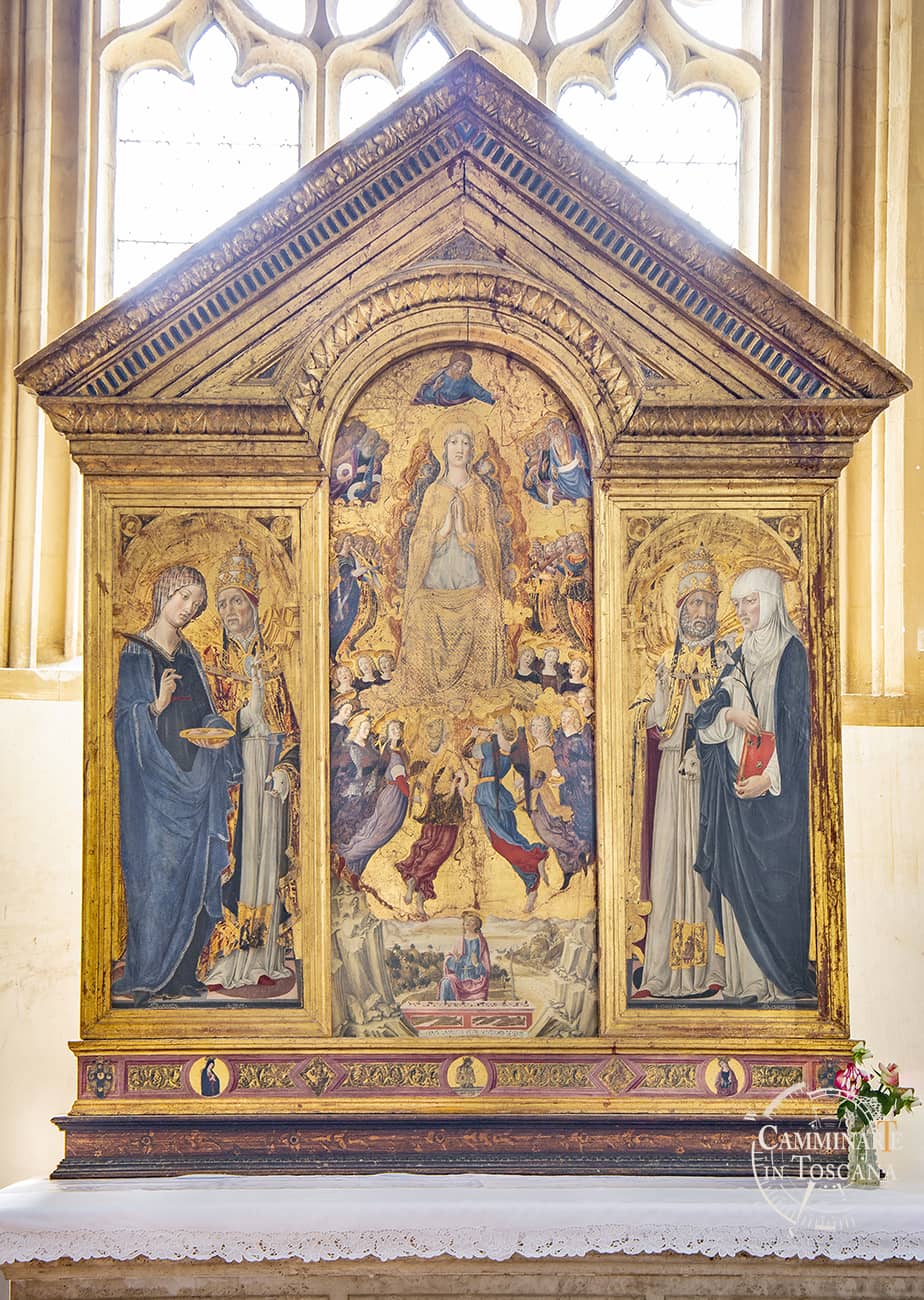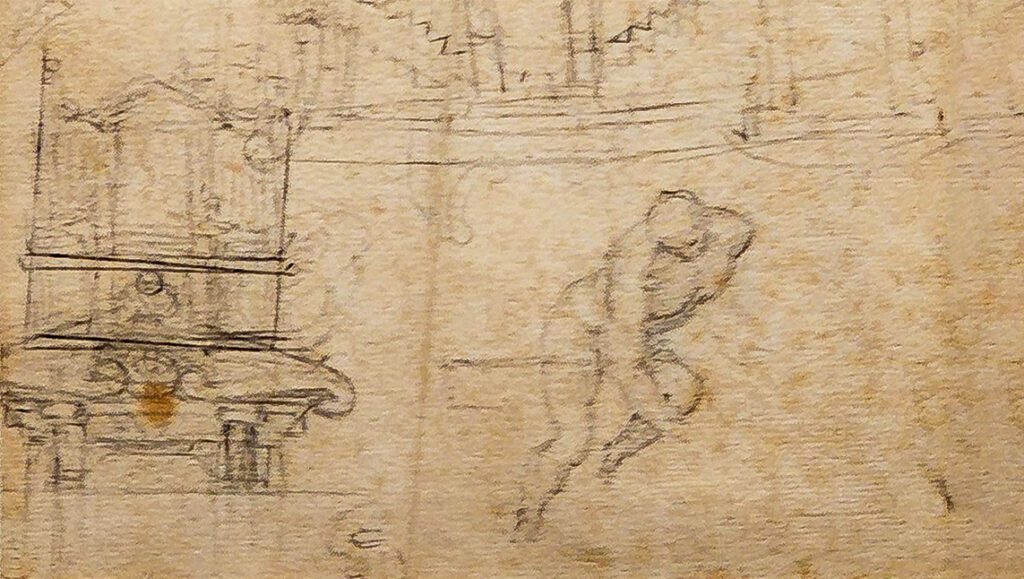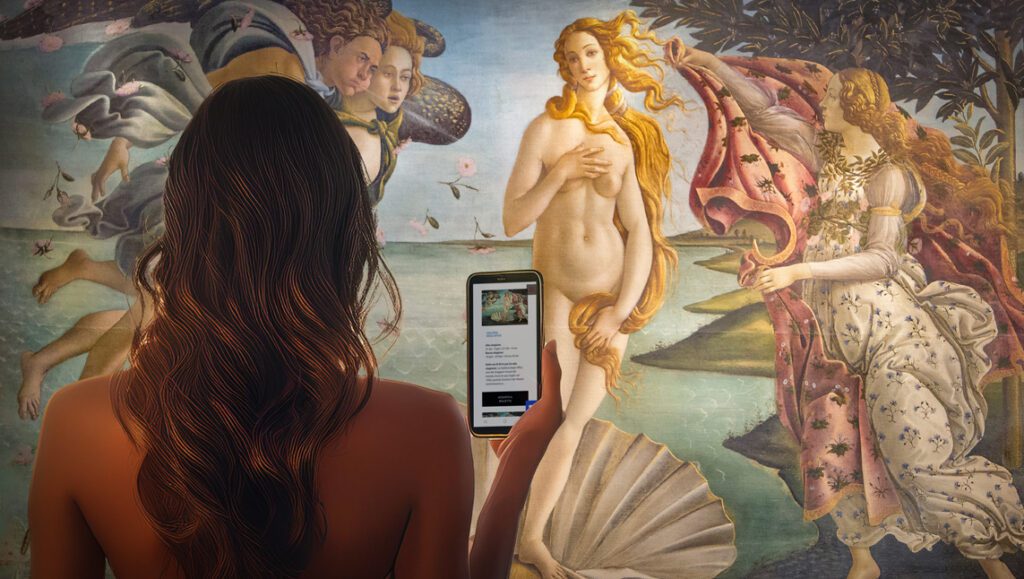
The Pienza Cathedral, an amazing place to visit in Val d’Orcia
The visit of the Pienza Cathedral is one of the most suggestive experiences to do in Val d’Orcia (Tuscany). The church is located in the heart of the homonym UNESCO-listed town, inside the beautiful square which is dedicated to Pius II, the 210th pontiff of the Catholic Church and the client of the building. To fully savour the beauty of this Cathedral and its refined altarpieces kept inside it is necessary to know the history of Pius II and the reasons that led him to erect here a magnificent church as eternal glory of God and His Church. The town of Pienza takes its name from the pope who was born here on 18 October 1405. In the world his name was Enea Silvio Piccolomini and when he was born, the town was called Corsignano but then, when he was pope, renamed the town.
The construction of the Cathedral was not simply the desire by the pope to endow an imposing building in his native village but represented the construction of a monument aimed at celebrating the Christian message’s universality. If the stylistic features that can be found in the Pientina cathedral refer to the ‘archeological taste’ that was fashionable in the mid-fifteenth century it is because they could be those that best expressed the eternity value of the Roman Church to the pope’s vision. Since the classical style referred to the glories of the Roman Empire at the time of its maximum expansion, it became the most adequate language to express the the Roman apostolic’s eternal sovereignty, especially after the dissensions of the Council and, mostly, after the Western Schism. At that point, the Roman Church needed to reaffirm its authority.
Gold Sacredness
What the pope’s commission in Pienza also did was to pay the utmost attention to every figurative detail. In fact, in Pienza not only the eternity of classic style is exhumed but also the concept of ‘invisible sacredness‘ which had prevailed in all figurative art since the late antiquity was restored. That figurative tradition was characterised by the lack of a spatial connotation. As it could be seen until the advent of Giotto, the sacred characters were arranged on a neutral gold background that eliminated any concrete connotation, confining them to a dimension that was not the observer’s. The sacred space was a ‘beyond’ space . The Pienza’s commission forcedly returned to that world, since the gold background of the plates rehabilitated that sacredness so important for the message that the pontiff wanted to give in his pontificate.
Of the five altarpieces of the Pienza’s Cathedral, all have a gold background. One of these represents the Virgin’s Assumption into heaven. The work is by Lorenzo di Pietro, known as Vecchietta. The artist was a Sienese painter and sculptor who had been particularly attentive to what Donatello had done in the town of Siena (think of the dramatic St. John the baptist’s Beheading on the Baptismal font of the Duomo).

Virgin Mary Assumption, Vecchietta, 1462, Pienza Cathedral
The ‘antica’ altarpiece
The Pientina table shows a layout commonly called ‘all’antica’ (old-fashioned way), a shape – the square one precisely – which was in vogue in the second half of the fifteenth century and which saw the widespread use of elements of the classical language, such as capitals and pilasters for example. However, the fifteenth-century models were often enriched by a repertoire of very imaginative decorations, as Donatello himself had done several times in Florence (think of the frames with cherubs from the Old Sacristy, or the Cantoria del Duomo).
In Pienza, Vecchietta painted on a carpentry whose gable shape refers directly to the external pediment of the Cathedral. In the arched arch in the center of the table, he paints the figure of the Virgin who, while taking up the frontal schematism of the previous Sienese tradition (one of the most famous is the stained glass window of the Cathedral) is characterised by a new spatial depth.
As can be seen both in the chiaroscuro rendering of this composition – a distinctive feature of the artist’s brush stroke – and from the expedient of the Virgin’s hands turned to the right, aimed precisely at underlining the volume, the work finds an unusual spatial disposition compared to the representations of the same subject in the Sienese context. It places this table among the more “stylistically” modern ones together with the altarpieces painted in the Pienza’s Cathedral by Matteo di Giovanni.
One of the first representations of Catherine as a saint
Among the saints of the Vecchietta’s altarpiece we also find Saint Catherine of Siena‘s figure. The presence on the panel of the Sienese Saint has a particular interest, since Catherine, although she was already highly revered and was getting great popularity among the Sienese devotees and beyond, was officially canonised only by Pius II in 1461. Therefore , as Vecchietta painted this altarpiece a short time later, the figure we see here of the Saint is one of her first official representations as a Catholic Church’s Saint.
As can be seen from what has been said above and for many other reasons, a visit to the Pienza’s Cathedral is therefore an unmissable thing when traveling in Val d’Orcia. Seeing these places not only means knowing the history of a monument but it means retracing the events of one of the most particular moments in the Italian and European history ⟣



